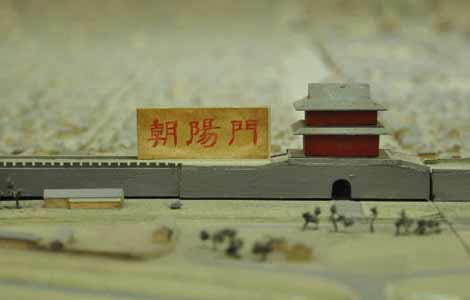Overall plan for overcapacity cut to be issued
Updated: 2013-08-27 06:50
By Zheng Yangpeng (China Daily)
|
|||||||||||
China's overall plan for resolving industrial overcapacity has been drafted and will be issued soon, media reports said.
Citing Jing Xiaobo, an official from the Ministry of Industry and Information Technology, National Business Daily reported on Monday that the plan - drafted by the ministry and the National Development and Reform Commission - is finished.
This plan will be the country's second effort in less than two months to rein in overcapacity, a chronic problem that has plagued China's industrial sector for four years.
The new overall plan will feature four "a batch of" strategies: to digest a batch of excess capacity by boosting domestic demand; to transfer a batch of excess capacity by accelerating a "go global" strategy; to integrate a batch of excess capacity by mergers and acquisitions; and to phase out a batch of excess capacity by strengthening environmental, energy-efficiency and security standards, Jing said.
The steel, cement, electrolytic aluminum, flat glass and shipbuilding industries are the five key targets in the overcapacity reduction plan, the China Securities Journal reported earlier.
Authorities will use technological standards as a way to phase out outdated facilities and capacity, and will make sure that over 80 percent of the existing facilities will be used, the Journal said.
This plan follows a massive government crackdown on overcapacity at the end of last month, when the Ministry of Industry and Information Technology ordered a reduction in overcapacity in 19 industries across the country. More than 1,200 companies, including 19 listed companies, were told to cut their production capacity.
But many analysts pointed out that most of the outdated facilities listed by the ministry had already either been closed or sold to local companies, casting doubt on the actual effect of the crackdown.
The Chinese central government has called for a reduction of overcapacity in some industries for years, with very limited effect. In the past, factories with a capacity below a certain level were ordered to shut down. In reality however, the move encouraged some companies to ramp up their capacity to meet the new levels, experts said.
Overproduction has led to price-cutting wars and repressed companies' profit. But many local governments were reluctant to implement orders to rein in overcapacity as they heavily rely on their industrial companies for fiscal revenue.
Speaking at a recent economic forum, Li Yizhong, former minister of industry and information technology, acknowledged that the previous method for cutting overcapacity - shutting down small factories and building a larger factory with equal capacity - has not been implemented well.
"The reality is the small factories were not closed, and a larger factory was built. The policy ended up with more redundant industrial capacity," Li said.
"To put it bluntly, to close down a small steel mill is much more difficult than shutting a large one," he added.
In the steel industry, for example, 86 major Chinese steel producers by the end of June had accumulated a total debt of more than 3 trillion yuan ($490 billion), while their combined profit in the first half of this year was only 2.2 billion yuan, according to the China Iron and Steel Association. But they kept on producing despite huge losses with the hope that they would survive while their competitors went bankrupt.
Li admitted that political considerations were behind the difficulty of implementing mergers and acquisitions. Local governments rejected cross-provincial M&As because they feared that if companies within their jurisdictions were to be amalgamated, the local governments would lose the GDP and fiscal revenue those companies generate.
"We should fix the current GDP statistical method and allow local governments to share the restructured firms' fiscal revenue. Otherwise, cross-provincial M&As will be impossible," Li said.
Related Stories
Overcapacity obsession 2013-08-19 07:58
China accelerates overcapacity reduction 2013-08-17 15:16
Overcapacity sends China's steel sector into loss 2013-08-01 10:38
Overcapacity vexes Chinese steel industry in H1 2013-07-24 17:06
Analyst sees industrial overcapacity last until 2016 2013-05-17 17:35
Today's Top News
Foreigners nabbed for personal info trafficking
Caution urged in online reporting of violence
Group renting debate revived by boy's death
Public mixed over changes to train ticket returns
Concerns of growth at cost of environment
Scientists want stricter control of bird markets
Metro offers passengers books to borrow
Beijing seeks to cement relations with Singapore
Hot Topics
Lunar probe , China growth forecasts, Emission rules get tougher, China seen through 'colored lens', International board,
Editor's Picks

|

|

|

|

|

|





